Enlightenment and Romantic Education
Ode to Eton College (Blake/Thomas Gray)
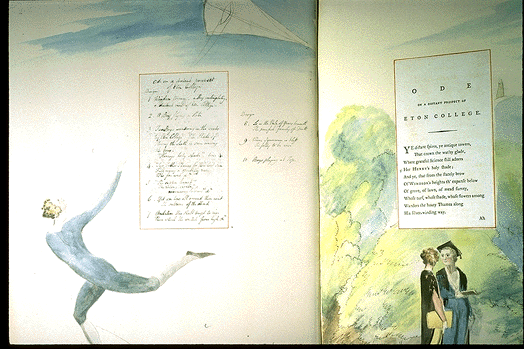
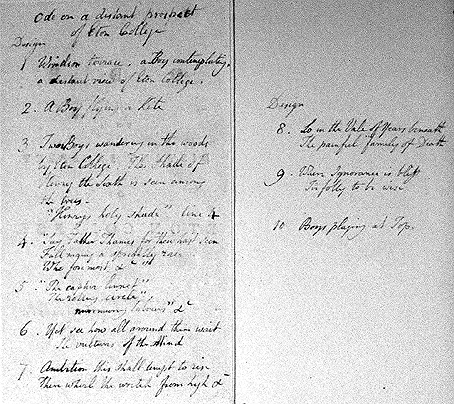
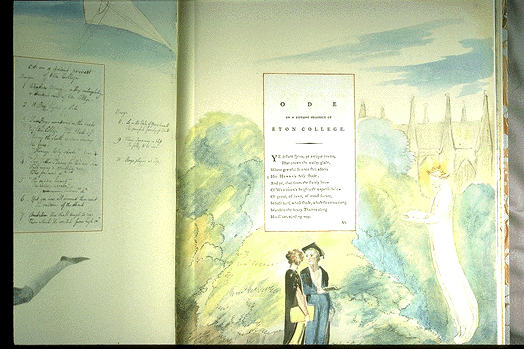
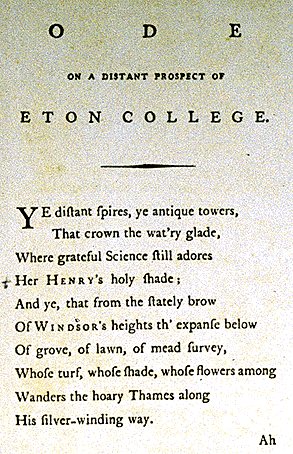
Figure 1. Blake, William (1757-1827). William Blake's water-colour designs for the poems of Thomas Gray, with introduction and commentary by Geoffrey Keynes. [Clairvaux, Jura, Trianon Press for the William Blake Trust, London, distributed by Bernard Quaritch, 1972].
This is a folio-sized three volume facsimile set of the originals possessed by Paul Mellon. The set contains one hundred and sixteen designs along with the inlaid pages of Thomas Gray's Poems (1790). The designs were probably begun around 1797. This set has French style morocco portfolio slip cases.
Thomas Gray (1761-1771) was an English poet and letter writer. He is notable as one of the forerunners of the Romantic movement. His poetry is marked by a love of nature and melancholy reflection, and consists primarily of meditative lyrics and Pindaric Odes. Some of these works include: Ode to Spring, Hymn to Adversity, Ode on a Distant Prospect of Eton College, Ode on the Death of a Favorite Cat, Drowned in a Tub of Gold Fishes. His most famous work is the The Progress of Poetry.
Blake’s Innocence and Experience
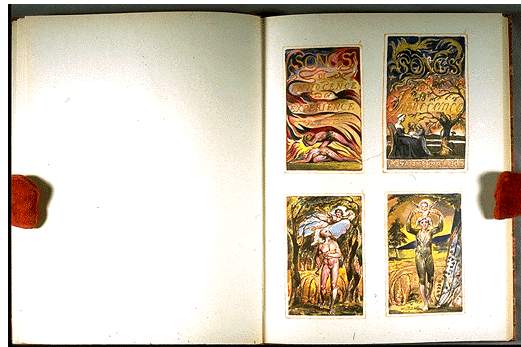
Figure 2. Blake, William. Songs of innocence and experience: shewing the two contrary states of the human soul. [London, Trianon Press for the William Blake Trust, 1955].
This edition contains 54 leaves of plates, color facsimiles, issued in a slipcase, with a bibliographic statement by Geoffrey Keynes.
William Blake was an English poet, engraver, painter, and mystic. He worked as an apprentice to a printer/engraver, and in 1771 began to illustrate his own work with copperplate engravings and watercolor. His visionary world of mysticism has foundations in the theological philosophy of Emanuel Swedenborg. This mysticism is essential to the understanding of his work, based in antinomian belief of direct communication with God through visions. Antinominism is the theological doctrine of faith, that by God's gift of grace through the gospel a Christian is freed not only from the laws of Moses, but from all forms of legalism, and all accepted norms of morality of a given culture. Blake is most well-known for his illustrations of the works of Thomas Gray and Dante.
Songs of Innocence and Experience are two dualistic groups of poems, each possessing a correlation to the other. Songs of Innocence emotes the feeling of divine love and sympathy while Songs of Experience address the power of evil. Blake presents innocence and experience as two opposing states of the human soul. Although education is usually a mark of experience, Blake places The Schoolboy with the Songs of Innocence. The poem speaks of a love of nature, especially on a spring morning, but bemoans the need to ruin the experience by having to attend school. The schoolmaster is presented as "a cruel eye outworn" and portrayed as a villain who holds students hostage against their will. Learning and books become meaningless drudgery which cage the spirit of the child who longs to take flight into the whimsical joys of nature. For Blake, youth is fleeting, and must be enjoyed while it lasts.
Blake (Marriage of Heaven and Hell)
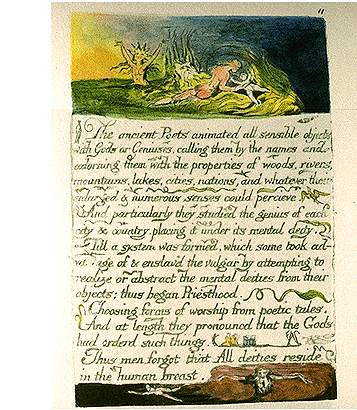
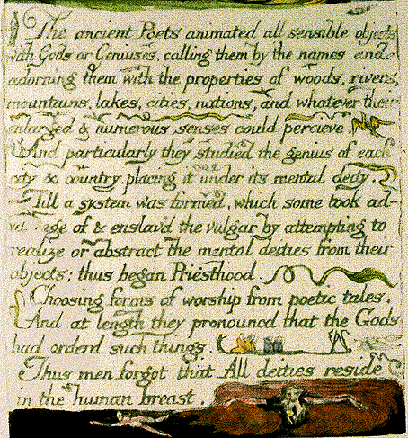
Figure 2a. Blake, William. The Marriage of Heaven and Hell by William Blake reproduced in facsimile from an original copy of the work printed and illuminated by the author between the years 1825-1827, and now in the Fitzwilliam Museum, Cambridge. [London, Toronto, J.M. Dent and Sons, Limited, New York, and E.P. Dutton and Company, 1927].
This is the chief prose work written by William Blake, and sets forth his doctrine of Contraries. In this philosophy, Blake emphasizes the negative side of his dualistic thinking. He writes: "Without contraries is no progression. Attraction and repulsion, reason and energy, love and hate, are necessary to human existence." He denies matter as reality, eternal damnation, and the right of authority. He especially attacks eighteenth century rationalism and Protestanism for "reducing moral complexities to oversimplified formulas."
Blake Proverbs of Hell
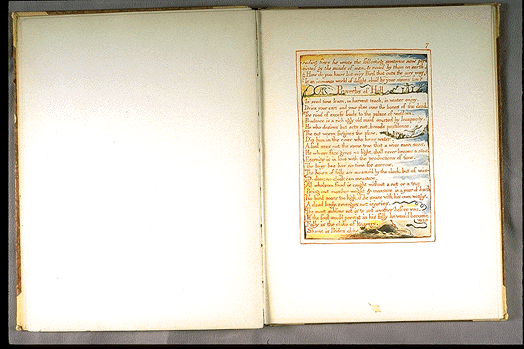

Figure 2. Blake, William. Songs of innocence and experience: shewing the two contrary states of the human soul. [London, Trianon Press for the William Blake Trust, 1955].
"The School-boy," William Blake
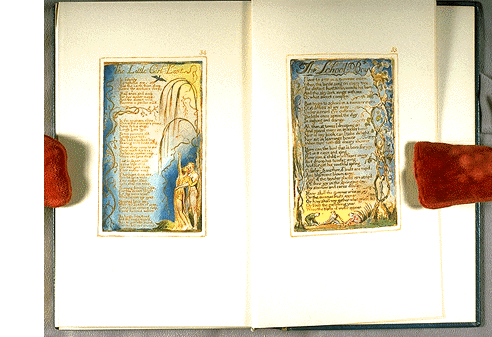
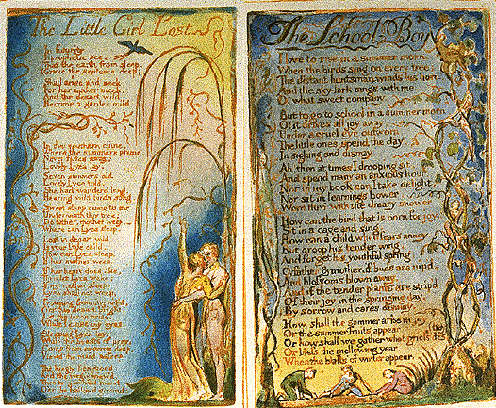
Figure 3. Keynes, Geoffrey, Sir. A Study of the illuminated books of William Blake: Poet, Printer, and Prophet. [New York, Orion Press, 1964].
A portion of this was published earlier in 1964 under the title "An exhibition of illuminated books of William Morris: A Commemorative Handbook."
School of Salerno (Longfellow’s Works)
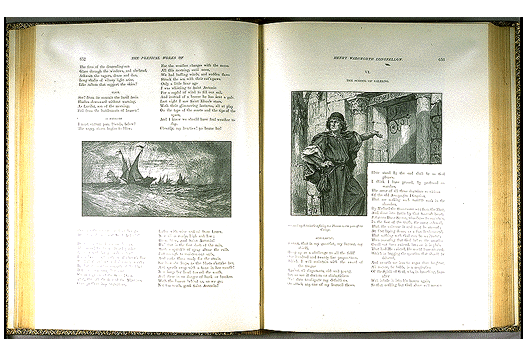
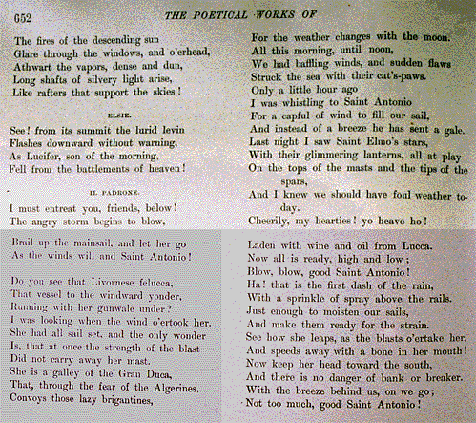
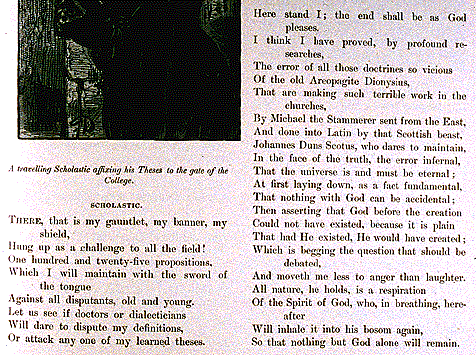
Leather binding (Longfellow’s Works)
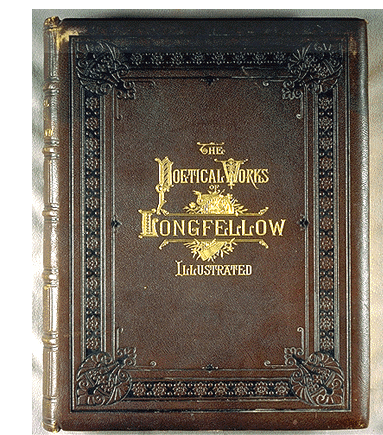
Figure 5a. Longfellow, Henry Wadsworth (1807-1882). The Poetical Works of Henry Wadsworth Longfellow. [Boston, Houghton-Osgood and Company, The Riverside Press, Cambridge, 1879]. Excerpt from The Golden Legend, VI. 'The School at Salerno.' artist: F. Dielman, and engraver: John Karst.
This is a two-volume set with beautifully engraved illustrations, that was issued in thirty parts for subscription, and page continuously. The cover is made of heavy tooled leather with gold embossing, gilded pages, and detail, and glossy marbled end papers in maroon, pink and blue. The multiple engravings are drawn and executed by a variety of artists and engravers.
The Golden Legend (1483) was a compilation of the Lives of the Saints with other ecclesiastical commentary, and was one of the most popular books published by William Caxton. Material was drawn from the Latin of Legenda Aurea by Jacobus de Voragine (1230-1298) which appeared in French and English versions. The poem by Wordsworth The Golden Legend (1872) is the second part of a trilogy called Christus: A Mystery. The primary theme is a variant on the Faust legend. It explores the attitudes of the Middle Ages towards Christian truth.
The illustration in the exhibition depicts a travelling Scholastic who is affixing his thesis to the gate of the college at the School of Salerno, which was a highly reputable medical school. The text consists of a monologue by the Scholastic, and is followed by a dialogue between two doctors and two scholars, and later, Lucifer joins in. The scholars discuss philosophy and criticism, arguing on the merits of studying literature or pursuing a career in medicine. A second illustration follows. This depicts a male cloaked figure reading the dissertation that the Scholastic has attached to the door.
Emma and Eginhard (Longfellow’s Works)
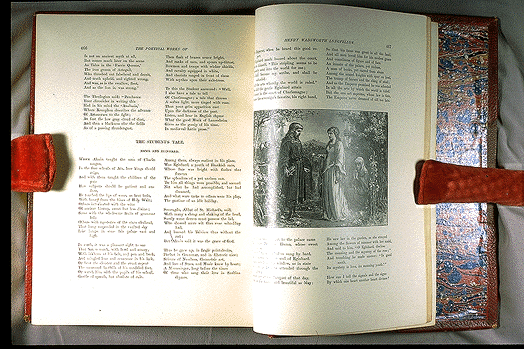

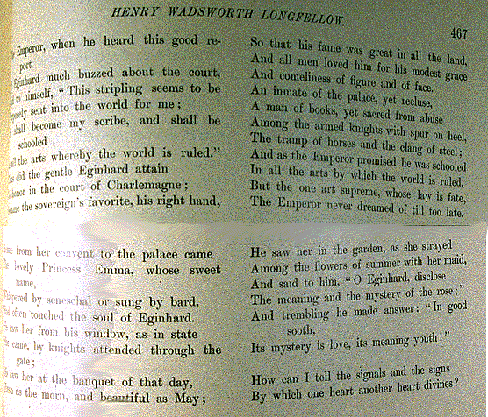
Figure 5b. Longfellow, Henry Wadsworth (1807-1882). The Poetical Works of Henry Wadsworth Longfellow. [Boston, Houghton-Osgood and Company, The Riverside Press, Cambridge, 1879]. Excerpt from Tales of a Wayside Inn. 'A Student's Tale: Emma and Eginhard.' artist: F. Dielman, and engraver: W.J. Dana
This is a two-volume set with beautifully engraved illustrations, that was issued in thirty parts for subscription, and page continuously. The cover is made of heavy tooled leather with gold embossing, gilded pages, and detail, and glossy marbled end papers in maroon, pink and blue. The multiple engravings are drawn and executed by a variety of artists and engravers.
'Tales of a Wayside Inn' (1863) is a collection of narrative poems by Henry Wadsworth Longfellow based on a structural tradition similar to Boccacio's Decameron, Marguerite de Navarre's L'Heptameron, and Chaucer's Canterbury Tales. The tales are told by a group of people huddled around the hearth of a New England tavern, and strongly reflect Longfellow's scholarly fascination with the Middle Ages. Several "students tales" are included among the various narratives contained in this work.
'Emma and Eginhard' is a student's tale of love between Eginhard (Eginhard, 770-840) and the daughter, Emma, of the emperor Louis I. Eginhard was a Frankish court diplomat, scholar, friend and biographer of Charlemagne, and was taught by Charlemagne's chief educational minister, Alcuin (735-804). Alcuin was an English monk in charge of the literacy of the Frankish nobility. He was well-versed in the Latin classics and the written works of Boethius and Cassidorus on the liberal arts. Alcuin ran the palace school at the court of Aachen, and utilized a cathechetical method of instruction with his students. As educational advisor to Charlemagne, his recommendation was enacted. His educational legislation required that every abbey conduct a school for instructing boys to read, write, sing, do arithmetic, and Latin grammar. Eginhard continued in the role of educational administrator of the school in the court of Aachen after Alcuin's death.
Henry Wadsworth Longfellow was an American poet, translator, and college professor, and a prolific writer who achieved a high level of popularity, and gained a wide audience for his work. Born of New England stock, he attended Bowdoin College in Maine, and went abroad to supplement his study of foreign languages. Upon his return he taught romance languages at Bowdoin College, and after another trip to study abroad was hired as the chair of modern languages at Harvard.
Among his well-known poetic works which contain themes and motifs about education are: The Children's Hour, The Village Blacksmith, and A Psalm of Life. Longer narratives include Evangeline, The Golden Legend, Hiawatha, The Courtship of Miles Standish, and Tales of a Wayside Inn. Rooted in literature, his work includes a great deal of information about local history, daily life and customs, and is highly informative and didactic. For example, 'Hiawatha' presents the Native American worldview, emphasizing an education more along the lines of natural history, physical training in hunting and gathering, astronomy, and oral history. 'The Children's Hour' depicts the fatherly role in the care and raising of the child, an excerpt from 'The Village Blacksmith' depicts children in the journey to and from school, and 'Psalms of Life' express the didactic and moral lessons of daily life.
Progress of Poetry (Blake/Thomas Gray)
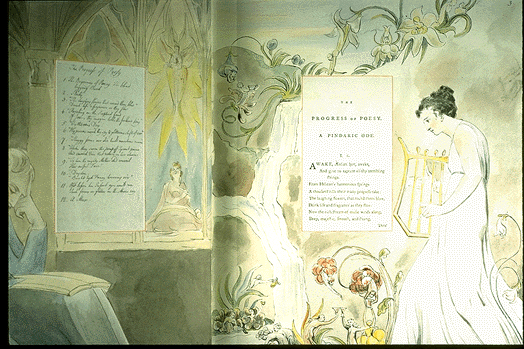

Progress of Poetry (Blake/Thomas Gray)
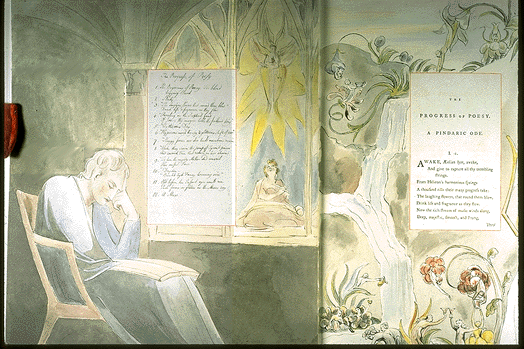
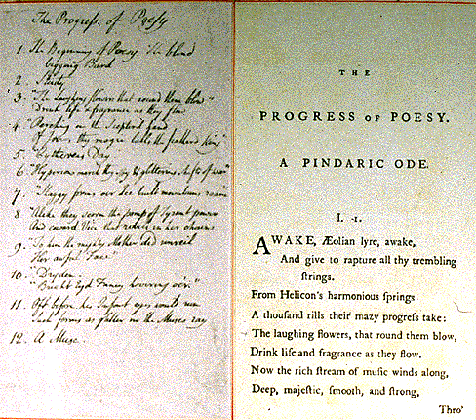
"Ode: Intimations of Immortality" Wordsworth
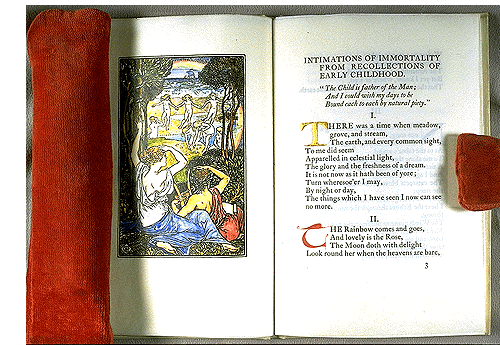
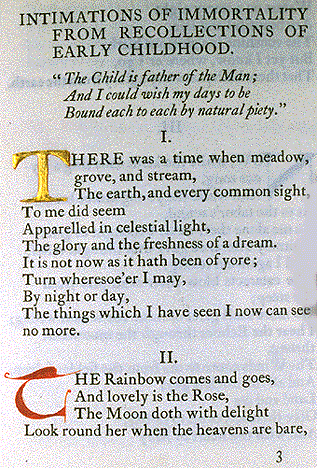
Figure 7. Wordsworth, William. Ode: Intimations of Immortality from Recollections of Early Childhood. [Strand, E. Arnold, New York, S. Buckley, 1903]. Illustrated by Walter Crane.
This poem was published in 1807, and has been popular ever since. Based on the Platonic doctrine of recollection, it asserts that the process of learning is simply recalling through the process of living and learning, and to the adult mind, knowledge gained in a pre-existent spiritual realm lost to the individual at birth. In aesthetics, this is signified by the androgyne, who embodies the masculine and feminine principles of the universe. It is believed that as we journey in life we seek out our former self or selves, our spirit, and attempt to recover or rejoin our other half to make ourselves complete. The poem is a celebration of childhood. Nostalgia and recollection assist the aged to return to their youth. Nostalgia, memory, and recollection maintain a continuity of experience, or, education, as one generation passes on its body of wisdom to the next.